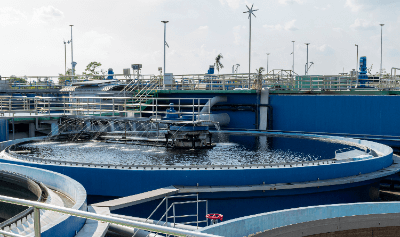What Is Used Wastewater Treatment Equipment
 Used wastewater treatment equipment purifies effluent discharged from industry, agriculture, and other industries, as well as from sewage and other human waste.
Used wastewater treatment equipment purifies effluent discharged from industry, agriculture, and other industries, as well as from sewage and other human waste.
Water treatment is an indispensable process in our daily lives in terms of efficient use of water, prevention of environmental pollution, and prevention of odors and other pollution. For this reason, many companies are striving for technological innovation to improve the efficiency of wastewater treatment.
Depending on the type of wastewater, removal of various types of substances is required, including heavy metal removal, organic matter removal, denitrification, and phosphorus removal.
Uses of Used Wastewater Treatment Equipment
Wastewater treatment equipment is used in all industries, including industry, agriculture, livestock, and water treatment plants.
In the industrial field, there is a strong demand for industrial wastewater recycling in Singapore, where water is scarce. Emerging countries such as China, the Middle East, and Southeast Asia require not only wastewater recycling but also sewage purification from the standpoint of environmental pollution prevention.
In the livestock industry, wastewater containing large amounts of livestock feces and urine is discharged in large quantities, so Used Wastewater Treatment Equipment is used to prevent environmental pollution and foul odors.
Principle of Used Wastewater Treatment Equipment
Used wastewater treatment equipment generally performs pretreatment, coagulation/precipitation separation, and filtration of the received sewage, and after adjusting the pH, etc., it is discharged or reused. The wastewater treatment process is divided into two major processes: pretreatment and biological treatment.
1. Pretreatment Process
In the pretreatment process, substances that inhibit biological treatment are removed. Heavy metals (copper, nickel, zinc, etc.) and suspended solids are treated by coagulation and sedimentation.
2. Biological Treatment Process
In the biological treatment process, organic matter is removed from the pretreated water using the decomposition ability of microorganisms. The amount of organic matter in the water is expressed in terms of BOD (biochemical oxygen demand) and COD (chemical oxygen demand), and the water is purified until these values fall below standards.
The activated sludge method is most commonly used in wastewater treatment and water purification plants. The activated sludge method refers to a method in which wastewater is treated by aerobic microorganisms using the dissolved oxygen in the water to break down organic matter through aeration and sedimentation and separation.
Another method is the biological membrane method. In the biological membrane method, microorganisms are attached to carriers to create a membrane-like structure that absorbs and decomposes pollutants in wastewater.
Other Information on Used Wastewater Treatment Equipment
1. Small Used Wastewater Treatment Equipment
Small wastewater treatment equipment is used at construction sites and small factories. This is because the amount of wastewater discharged is small and can be handled on an in-house scale.
Applications include wastewater from detergents, wastewater from grinding, and wastewater from food processing. Because of their small size, they can be transported by 2- to 4-ton trucks and can be easily installed. In addition, the system can perform the series of treatment operations described above, is simple to operate, and requires a low investment cost.
On the other hand, a large amount of domestic and industrial wastewater is discharged every day. Therefore, used wastewater treatment equipment itself is not suitable for use with small wastewater treatment equipment because of its large scale.
2. Used Wastewater Treatment Equipment in Factories
Factory wastewater contains many contaminants. Therefore, treatment equipment should be considered according to the type of pollutant and the wastewater characteristics of each factory.
Types of pollutants
Treatment facilities are considered for each substance, such as oil, organic matter, ammonia, and toxic metals in the treated wastewater. For example, activated sludge facilities are needed to reduce BOD (biochemical oxygen demand) and COD (chemical oxygen demand), while coagulation sedimentation facilities are needed to treat SS (suspended solids).
Wastewater Characteristics of Each Plant
The specifications of equipment differ for each plant because the concentration of hazardous substances in treated water, pH, and other wastewater characteristics are different for each plant, such as food, electronic parts, and petroleum/petrochemical plants. For food factories, these include anaerobic treatment using methane fermentation and filtration using bio-filters.
In the case of electronic component factories, inorganic wastewater and organic wastewater are treated separately because inorganic substances such as fluorine and arsenic are used in large quantities. In addition, the concentration of each toxic substance in the treated water at the plant is determined by the relevant laws and regulations. In order to achieve the required treatment concentration, the specifications of the equipment are determined after the preconditions for the amount of treated water and raw water concentration are established.